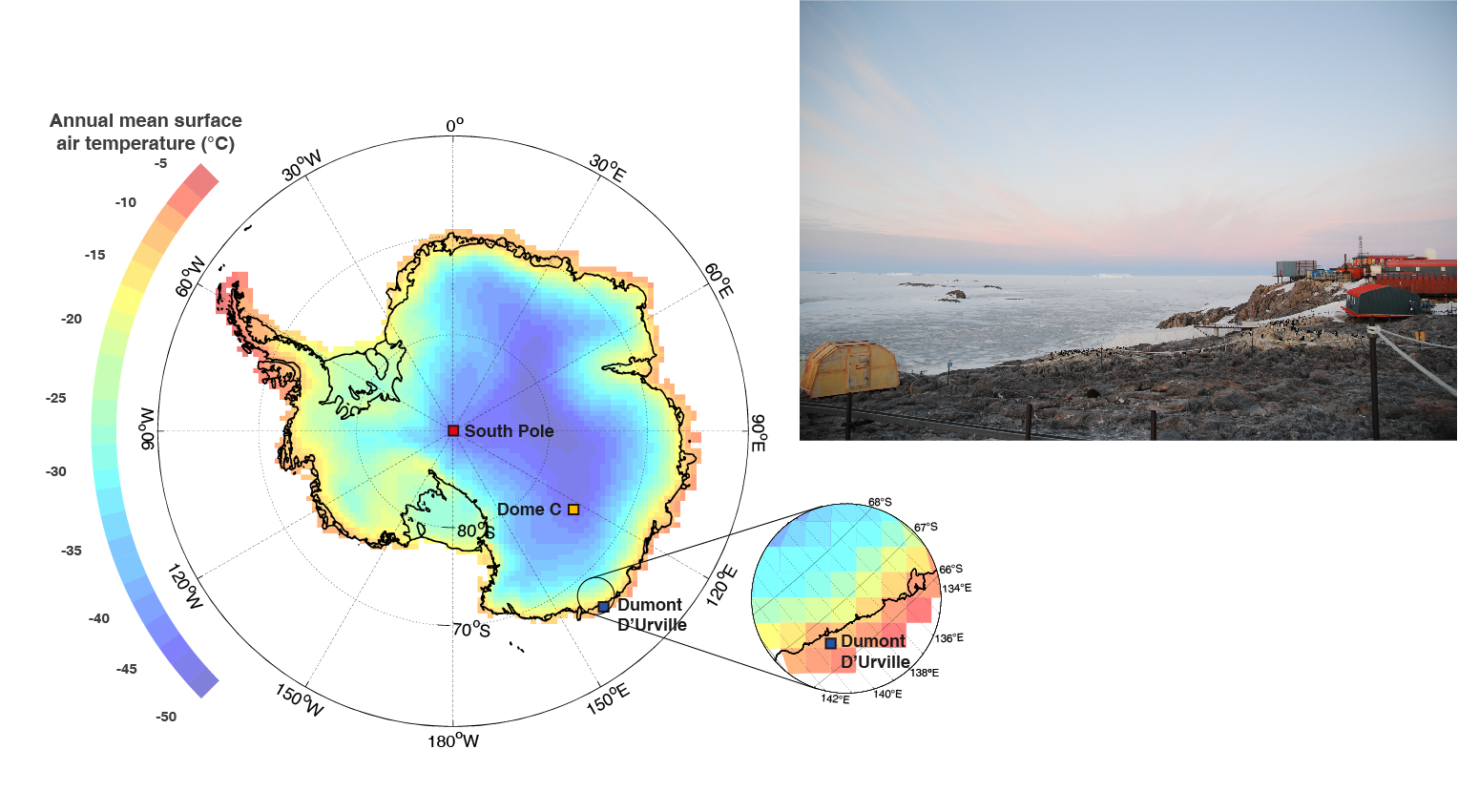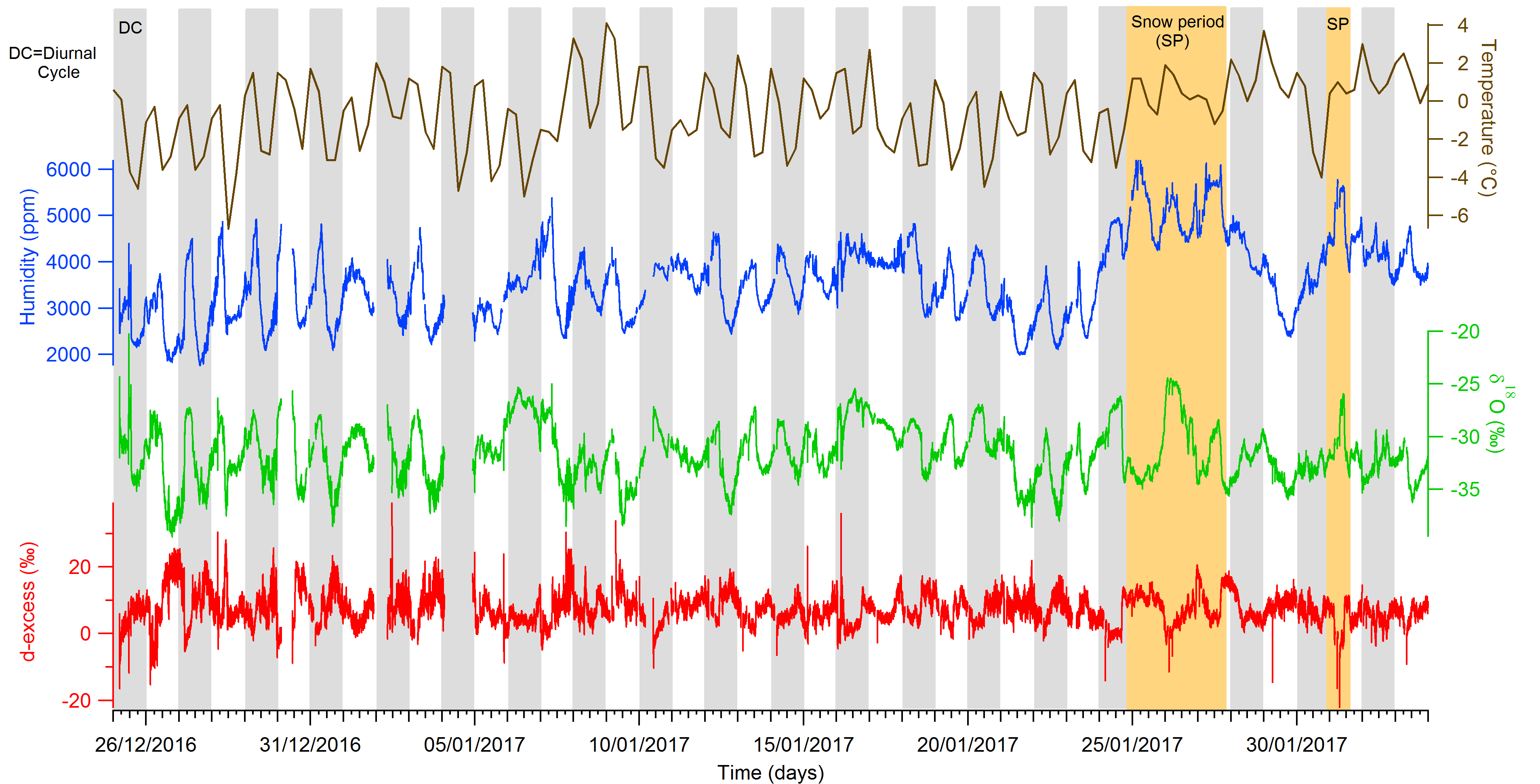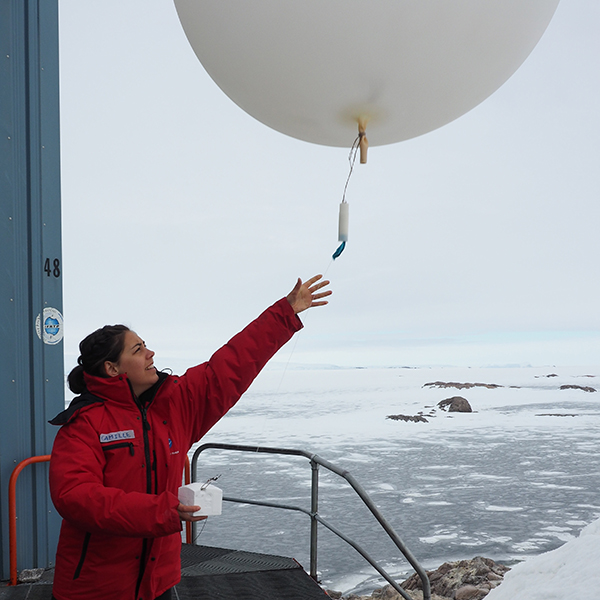The first results of water vapour monitoring at the coastal station Dumont d'Urville will help to link the isotopes records from ice cores to the ice-ocean-atmosphere interactions.
During the austral summer 2016-17, an infrared spectrometer monitoring water stable isotopes in the vapour has been deployed by Camille Bréant from LSCE (Laboratoire des Sciences du Climat et de l’Environnement, Paris, France) at the coastal station of Dumont d’Urville in East Antarctica (see Fig. 1). This campaign has provided continuous measurements of isotopic composition of the water vapour for 40 days, showing important diurnal cycles (up to 5‰ in δ18O) which differs from all other coastal records from Polar Regions (see Fig. 2). Important precipitation events are also imprinted in the records.

Figure 1 : Map of Antarctica presenting the mean annual temperature from Nicolas and Bromwich (2014), indicating the position of Dumont d’Urville in Antarctica and picture of the base: the instrument was installed in the first building on the right of the picture.
In parallel of the measurements of the water isotopes, aerosol filters have been collected every 4 hours and will be analysed at the Institut de Geophysique de l’Environnement (IGE, Grenoble, France) in the next few months. The purpose is to combine water vapour isotopic composition and chemistry of the major ions to back-trajectories in order to characterise the origin of the warm marine intrusion toward Dumont d’Urville and East Antarctica for different meteorological conditions, in particular, the local sea ice conditions and the katabatic winds.
Indeed, this part of Adelie Land is characterised by an important sea ice concentration which often remains through summer (as for instance through summer 2016-2017). This campaign will thus use the Antarctic coast as an open-air experiment to improve the understanding of the impact of the sea ice extent on water stable isotopic composition. These results could lead to a way to understand past variations of ice core isotopic composition as an indicator of the past dynamic of the sea ice-atmosphere interactions in Antarctica.

Figure 2 : sequence of temperature (black, °C), humidity (blue, ppmv), (green, ‰) and d-excess (‰) obtained at Dumont d’Urville during Austral summer 2016-2017. Large diurnal cycles of isotopic composition are observed which differ from other coastal records from Polar Regions.
| Camille Bréant is a Phd student at LSCE who works on geochemical tracers in ice core records, both on the processes affecting them and the application for paleoclimate studies. |  |
The mission has received the support of the ERC project Combiniso and of the project ASUMA.


